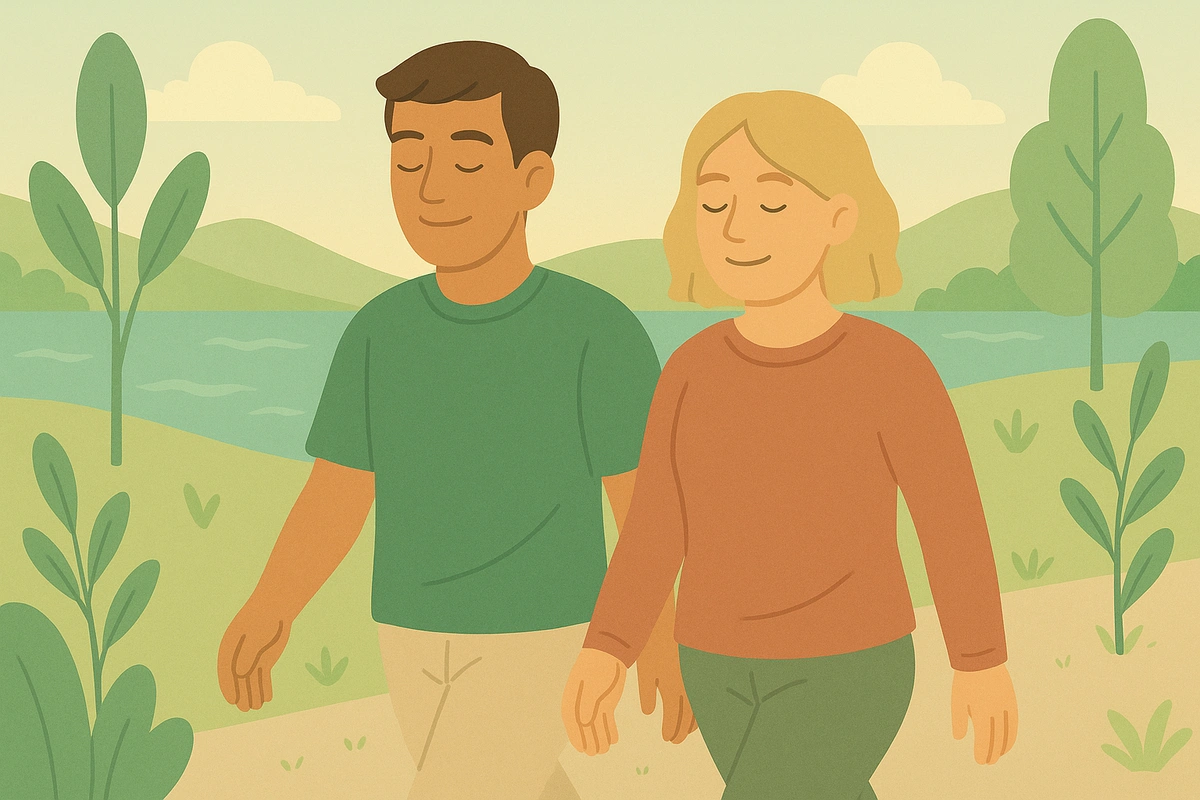Movement transforms anxiety, tension, and stress into calm stability through gentle physical activities that activate your body's natural relaxation response. This accessible practice harnesses the healing power of intentional movement to restore emotional balance and build lasting resilience against life's daily pressures.

Movement as regulation involves using gentle, mindful physical activities to calm your nervous system and reduce stress. This powerful technique recognizes that your body and mind are deeply connected - when you move with intention and awareness, you can literally shift from a state of anxiety and tension into one of calm and balance.
Your nervous system has two main operating modes: the sympathetic system that activates during stress (your body's "gas pedal"), and the parasympathetic system that promotes relaxation and recovery (your body's "brake"). Think of gentle movement as a bridge between these states - it gives your active energy somewhere positive to go while signaling to your brain that you're safe and can begin to relax. Unlike intense exercise that further activates your stress response, regulatory movement helps you find the sweet spot where physical activity becomes deeply calming.
Movement as regulation works by directly influencing your autonomic nervous system - the network of nerves that automatically controls vital functions like heart rate, breathing, and stress responses. When you engage in gentle, mindful movement, you activate your parasympathetic nervous system, which promotes the "rest and digest" response that calms your body after periods of stress or danger.
Think of your nervous system like a car that's been revving in traffic. Exercise increases endorphins, the happy hormones that signal to your body that you're not in physical danger. These natural chemicals help shift your system from high alert to a more balanced state. Unlike intense exercise that might feel like pressing the gas pedal harder, gentle movement acts like gradually releasing pressure and finding a smooth, sustainable pace.
The science behind this is remarkable: research shows that exercise can be as effective as antidepressants for some people with mild to moderate depression, and even 20-40 minutes of aerobic exercise can improve anxiety and mood for several hours. When you move mindfully, you're not just burning energy - you're actively retraining your nervous system to find calm.
Physical movement also works through what researchers call "interoception" - your awareness of internal body signals. When you pay attention to movement sensations, you strengthen the connection between your mind and body, which improves your ability to recognize and respond to stress early, before it becomes overwhelming.
Additionally, mindful movement engages your prefrontal cortex - the brain region responsible for emotional regulation and conscious decision-making. This helps override the automatic stress responses that can keep you stuck in cycles of anxiety and tension.
"I feel more anxious when I start moving" - This sometimes happens when your nervous system is very activated. Try starting with much smaller, slower movements, or begin with breathing exercises before adding physical movement. The key is finding movements that feel safe and manageable for your current state.
"I can't stop my mind from racing during movement" - This is completely normal, especially when you're new to the practice. Rather than trying to stop thoughts, gently return your attention to physical sensations like how your feet feel against the ground or how your arms move through space.
"I don't have time for 15-30 minutes of movement" - Even 2-3 minutes of mindful movement can provide nervous system benefits. Try micro-sessions throughout your day: shoulder rolls at your desk, gentle stretching while waiting for coffee to brew, or mindful walking from your car to your destination.
"I feel silly or self-conscious moving" - Start with very private movement practice until you feel more comfortable. Remember that this is medicine for your nervous system, not performance. Focus on how movement feels rather than how it looks.
"My body feels too tense or painful to move" - Begin with the gentlest possible movements - perhaps just rotating your wrists or slowly moving your head from side to side. Warm baths or gentle self-massage can help prepare very tense bodies for movement.
"I don't know what movements to do" - Start with natural body movements like stretching when you wake up, walking at a comfortable pace, or gentle swaying to music. Your body has natural movement wisdom - trust what feels good and helpful.
"Movement doesn't seem to help my mood" - Some people need several minutes of movement before noticing effects, and some benefit from different types of movement. Experiment with various activities and durations. If movement consistently doesn't help, consider consulting with a trauma-informed movement therapist.